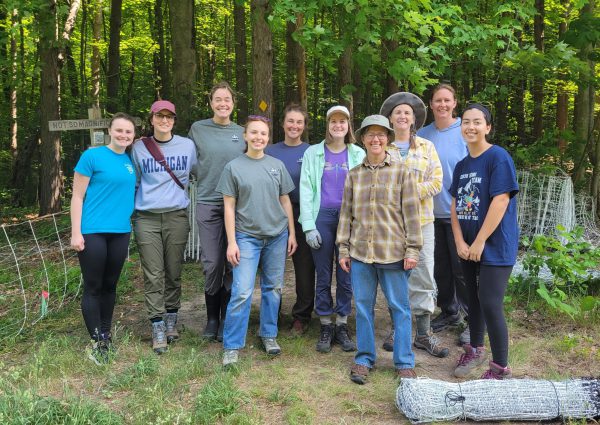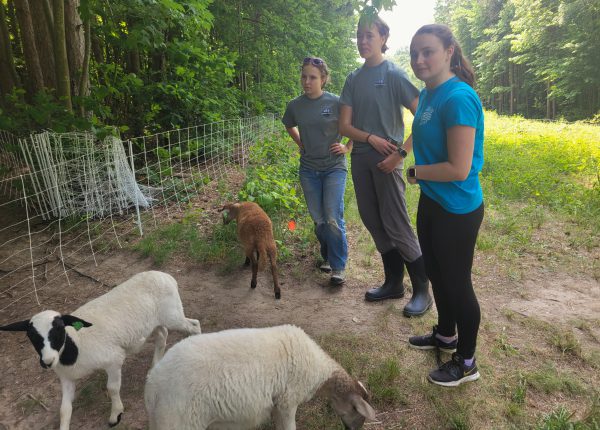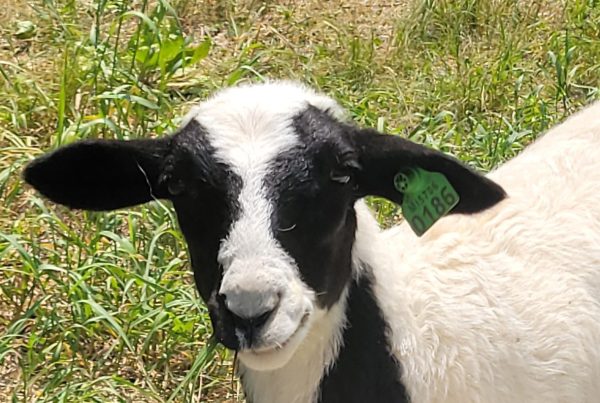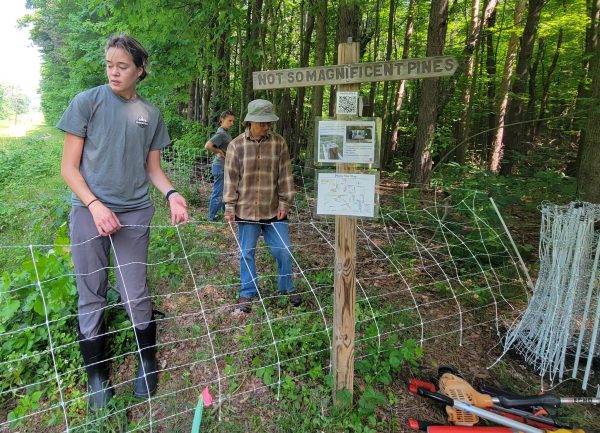
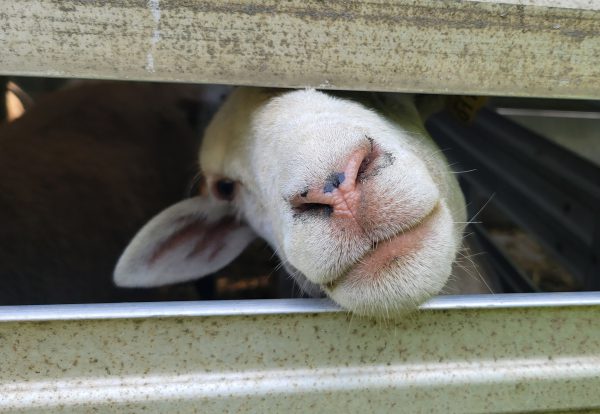
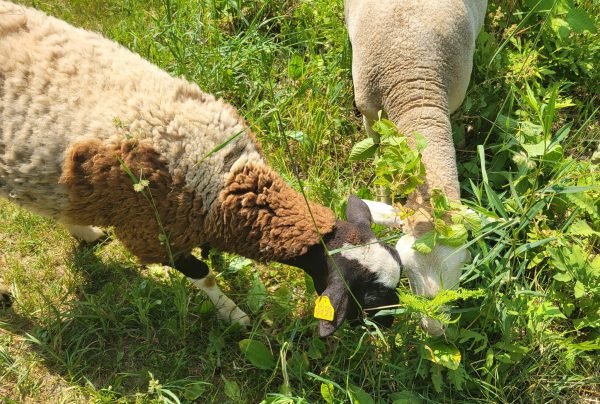
If you’re not sure about the benefits of replacing mowing with grazing in some agricultural applications, don’t knock it until ewes try it.
Two Kalamazoo College students, the Department of Biology and the Tending Tilth LLC farm brought sheep into the Lillian Anderson Arboretum this month in the first part of a study to see whether grazing, controlled burning or a combination of the two could help pare back the need for mowing, thereby reducing the use of fossil fuels and trapping carbon.
Such a practice would be an example of regenerative agriculture, a rehabilitative approach to food and farming systems that is gaining steam through research at K. It focuses on resisting climate change while strengthening the health and vitality of farm soil and the water in it.
One of the students, Aerin Braunohler ’24, is working on the project as part of her Senior Integrated Project (SIP); the other, Ava Loncharte ’25, is the Seminary Hill Sustainability intern with Tending Tilth through the Environmental Stewardship Center. They are working alongside Tending Tilth owner Lauren Burns and Professor of Biology Binney Girdler.
Burns connected with Professor Emeritus Paul Sotherland last year when she was working on another project through Oshtemo Township. In talking with Sotherland about her goals for her contract sheep-grazing business, which included teaching young people about her industry and developing more science on grazing, he recommended involving K students including those working on their SIPs. The idea thrilled Burns who enjoyed having interns when she worked as a zookeeper at Binder Park Zoo in Battle Creek and Lincoln Park Zoo in Chicago.
“I enjoy sharing my knowledge of conservation and regenerative agriculture with young people,” she said. “I also enjoy hearing about what they’re learning. It’s been exciting to see Aerin learning some new techniques for soil sampling and GPS plotting, and Ava learn more about farming in general and what we can do to take care of the land. They also ask me questions that help me think more about my business long term and the effects we’re having on the environment.”
On June 8, Braunohler, Loncharte, Burns and Girdler, along with a team of Center for Environmental Stewardship employees and volunteers, set up electrical fencing to lead Burns’ sheep from a trailer unloaded at the Batts Pavilion, through the Not So Magnificent Pines and to the Powerline Trail.
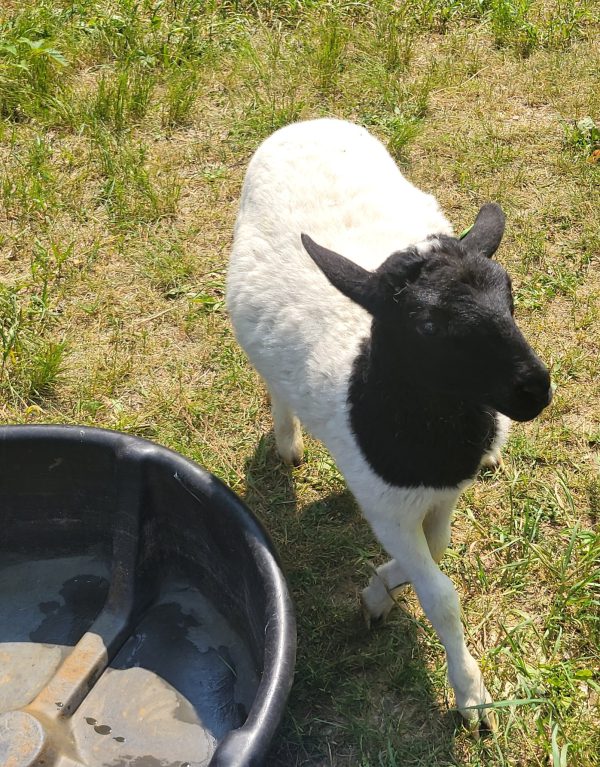
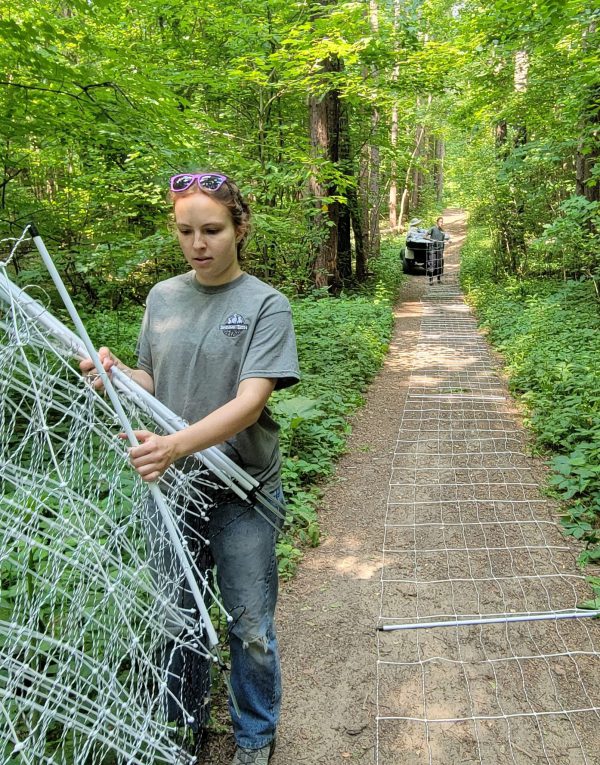
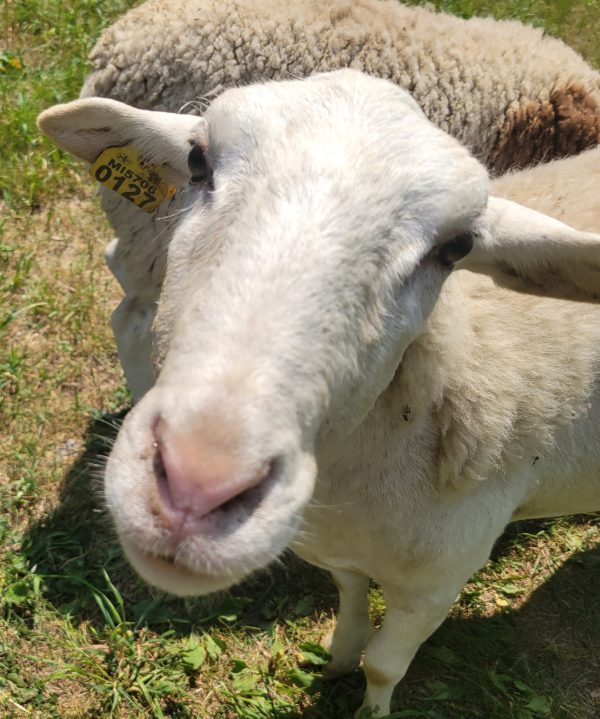
After about a week of grazing under the power lines, the sheep were removed so Braunohler and Loncharte could collect soil samples and more to measure the benefits of having the animals there. Braunohler now is splitting her time this summer between the arboretum, a Dow Science Center lab, the Gilchrist Rehabilitation Center near Three Rivers, and the Tending Tilth farm to continue the study.
“There’s a lot of research that shows how the action of sheep grazing, through the pressure of their hooves and addition of waste to a landscape, can have regenerative effects on the soil in comparison to mowing as a means of land management,” Braunohler said. “Controlled burns, rooted in indigenous knowledge, are also known to regenerate soil, but there’s not a lot of data that shows the impact of these three practices—mowing, grazing and burning—side by side. I’m excited to see what we find.”
A childhood interest in farms is leading Loncharte, a biology major also considering an environmental studies concentration, toward her own career path in regenerative agriculture. That path flows from her participation in the College’s Just Food Collective—a student-led, sustainable-food systems program available through the Mary Jane Underwood Stryker Center for Civic Engagement. She also tends to crops at the hoop house, a greenhouse on campus that allows students to grow produce year-round.
Loncharte said that her internship through Tending Tilth so far has taught her that grazing doesn’t provide an exact alternative to mowing as the practices have different outcomes. Instead, mowing provides a short, even cut, while sheep are selective with what they eat, occasionally leaving the grass and plants up to a foot tall. However, grazing provides ecological benefits and soil health as the sheep fertilize, trample and aerate the soil.
“Everything I know about sheep, I’ve learned in this internship,” Loncharte said. “I’ve learned a lot about grazing as a method of regenerative agriculture and how it builds soil health. I’ve also learned about animal husbandry. We just had to treat a sick sheep that has a joint infection, so I learned about giving antibiotics and electrolytes to a sheep that’s limping. And I’ve learned about the business side of being client facing, seeing properties and learning how to make a name for yourself in the community.”
Research will likely need to be repeated and continued over the course of several years to ultimately prove that grazing has the conservation benefits Burns, Braunohler and Loncharte suspect it does. But their patience and continued efforts would pay large dividends in their fields of work.
“I’m really interested to show sheep grazing can help sequester carbon and retain water in soil,” Burns said. “I think evidence of that, climate change-wise, is important. Most businesses want to be able to say that they’re carbon neutral. I think if we prove that we can help in those goals, it would be great for our business and really great for our planet. If we can prove that the plots that are grazed by sheep versus mowing are helping to store more carbon and nitrogen in the soil without having to apply outside fertilizers, that would be a huge step in the regenerative agriculture world.”
